|
The story of Schucht Sax Technology
I founded Schucht Sax Technology in 1998.
The initial
idea was to find a very good instrument building company that could deliver reliable saxophone technology that was improved with SST technology.
In the first few years the first SST alto and tenor saxophones were created.
Logistical problems then led to a change in the focus of the product. The area of saxophone tuning became more and more important.
Whole saxophones were no longer in the range at some point.
Charlie Mariano and the first SST Sound EXpander Model I.
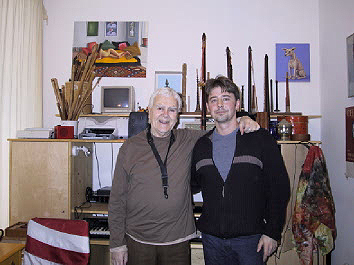 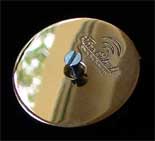
In 2002, in addition to the SST necks for alto and tenor, the SST Sound EXpander Type I. The Schucht Sax Technology company moved from Pforzheim to the Rhine to Erftstadt near Cologne.
This is where the first collaboration between me and one of the great saxophonists took place, the jazz alto saxophonist Charlie Mariano, who was living in Cologne at the time.
The collaboration resulted in the first SST Sound EXpander, which Charlie Mariano regularly used on his saxophone.
The development of SST products continued. In 2003 the first saxophone thumb hooks came onto the
market and the necks were further developed.
Meeting with Michael Brecker in 2005
In 2005 I met Michael Brecker. He was very impressed by the SST Neck model TN1 and took 2
models with him to the USA. Due to his serious illness, which then set in, we were unfortunately unable to expand our cooperation.
David Liebman and the SST Neck Mod. TN1
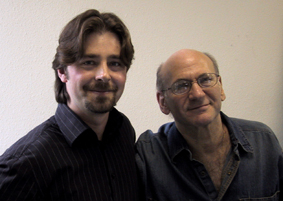
In 2006 I visited David Liebman in Belgium, one of the greatest saxophonists of our time. Since then, David Liebman has been using the TN1 on his Keilwerth tenor saxophone.
David Liebman also uses the SST thumb hook on his tenor and soprano saxophones.
2007, the year in which I met other top saxophonists and won them over for my products.
Joe Lovano and the SST Neck Mod. TN2
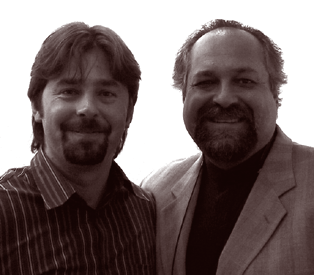
Joe Lovano wrote an email in 2007.
He got the tip from David Liebman.
Together with Joe Lovano, the SST neck model TN2 was created, a modification of the TN1
First meeting with Ernie Watts 2007 in Berlin
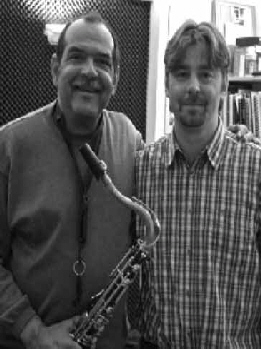
In 2007 I also visited the tenor saxophonist Ernie Watts in Berlin. He played the SST TN1 neck model
for many years. Ernie Watts also uses the SST thumb hook on his saxophones.
First meeting with Bill Evans 2007 in Una
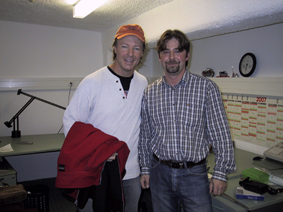
I visited Bill Evans during a concert in Una and showed him the SST Neck model TN1.
He only played the neck briefly. Since then, Bill Evans has only played the SST TN1 on his tenor saxophone.
Bill Evans also uses the SST thumb hook.
The Schucht Sax Technology company moves.
In autumn 2007 we moved with the company from Erftstadt to the Moselle in the tranquil village of
Wehr. Due to the great success of the years before and a stable, commercial base, I have withdrawn a little to start my heart project. The deeper exploration of old saxophone models like the MVI from Selmer Paris.
First meeting with Jerry Bergonzi 2010 in Cologne
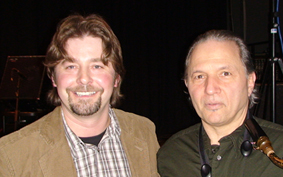
In 2010 I visited Jerry Bergonzi in Cologne. He tested 3 Neck models. Some time later I sent him the New York model. Here you can read what he wrote about this neck.
Time of intensive saxophone research
In Wehr on the Moselle, I began to delve deeper into saxophone research. The aim was to understand
the complete sonic background of old, legendary saxophones and to implement them technically. The TN1 was and is a very successful neck. It is still built today like the first TN1 model. The TN1 is based
on the old Selmer necks. But it is still a completely different neck than an MVI neck, a neck with its very own character.
The task now was to find out what makes an old MVI neck.
The basis for this project were the old saxophones from Selmer Paris, which are considered THE saxophones. There are some legendary saxophone brands, or old models from various other companies.
The old MVI, BA or SBA saxophones from Selmer, however, set standards in various musical styles that are still valid today. The MVI from Selmer is still the most modern saxophone in almost all musical
styles. Funk, Pop, Soul etc. are inconceivable without the melancholy, metallic and lively MVI sound. In jazz, the MVI has set extraordinary standards with its smoky, dark, warm, lively and deep character
with extremely great sound dynamics.
The MVI has inspired many generations and, like no other saxophone, has realized the saxophonists' sound ideas.
My respect was and still is for the master instrument makers who designed these saxophones. A level
that no saxophone building company could even begin to achieve and that is still valid today in 2020.
I wanted to know where the quality of these old saxophones came from. What did the old master
instrument builders know that later and until now are considered lost. Was it special material findings? Did it have to do with the aging of the material? Was it the shape of the tube that we call the scale
length? What was it?
A search began that lasted from 2008 to 2019, a whole 11 years.
It quickly became clear that the neck plays a very central role.
It wasn't that hard to find out. For example, if you take an neck from XY and put it on an old MVI, it sounds the same as the saxophone from XY. The whole character is suddenly over. If you take an MVI
neck and put it on a saxophone from XY, it suddenly gets real character.
Due to the many tests that were necessary, the number of SST necks prototypes rose to around 1000 in the period from 2008 to 2019.
The time at the Moselle is over
In 2012 there was another move. We moved with the company SST from the Moselle to the Thuringian
Forest in Lauscha. A move from one climate zone to another :-) Nevertheless, I have never regretted the move.
The Thuringian Forest and the surrounding area are beautiful and the people here are rather calm,
simple and warm-hearted. A very good basis to lead a calm and peaceful life in a world that is getting more and more exhausting. The right environment to relax, reflect and ........ to research saxophones.
We bought a large house here that offered space to live and work.
In the last, almost 8 years, saxophone research has been carried out intensively. Production and sales continued as normal.
During this time the SST products changed (improved) immensely.
There have been several generations of thumb hooks over time. In 2017 a new product was added, the
SST Fundamental Musical Tone Tubes, with which it was possible to greatly improve conventional saxophone necks. Today, 2020, the SST FMT tubes are already in their 4th generation.
In the spring of 2018, a major breakthrough in neck technology began. I found the DNA in the old necks and was actually able to isolate all of the different components. That sounds like a medical report :-)
I could see where the fantastic sound centering comes from, the good resonance, the sound depth etc.,
all attributes without which a lively, warm and sustaining sound is not possible at all. Musically indispensable. I also recognized what makes a slim, direct tone and what you had to do technically to
produce a fat and rather broad tone. I also saw how you could control the timbres, how you could create more metallic sound for pop, funk etc. and how you could switch off metallic sound. Some jazz
saxophonists do not want a metallic tone but a more sonorous, dry tone.
Now “only”€¯ had to be found out how the individual components had to be assembled in their quantity.
This again required many prototypes. It was one of the most exciting times I've experienced in my saxophone research.
At the beginning of 2019, the new necks were at a very high level. Playability, sound center, sound depth and sound warmth, dynamics, etc. were just great, and yet one little thing was still missing. How
a single spice in a culinary meal unfolds its effect and makes it perfect, making it what it is, I still had to find this one. I already knew the spice itself, but ....... how could you make it technically?
Then the time came.
In summer 2019 I was able to technically implement this last point for the first time in a tenor neck
model Revelation. It combined with all of the other components for what I had been looking for for so many years.
The new Revelation model was born and it didn't take its name for nothing.
Together with the Old French, the Revelation model now offers every saxophonist who does not have an old Selmer the possibility to integrate these old, traditional sounds into their saxophone.
Even players with these old saxophones, the SST necks Revelation and Old French offer the possibility to improve their old saxophones without having to lose any sound component of their original neck.
With an MVI you can now achieve the tonal requirements of balanced action with the Old French
neck. With a BA you can now achieve the tonal requirements of an MVI with the Revelation neck. With a BA you can significantly improve playability with the Old French. The same goes for an MVI in
collaboration with the Revelation. The Revelation is even available in a variant that is more designed for jazz and a variant that is more designed for pop etc.
In autumn, the new models Harlem Stone (replaces the New York model, on the Old French line) and the new New Standard model (on the Revelation line) were created.
Both models work more openly and directly than their siblings.
In addition, there is now a completely new model that was designed for classic. This new bow from SST meets the demands of classical saxophonists at the highest level.
In autumn 2019 I also completely revised the old EXpander, my first tuning product.
The new Sound EXpander, Model II, is built in 2 versions. Both have been available since early 2020
and have already amazed many players.
What's next?
Let's see ;-)
A new product is about to be completed, the first SST ligature.
The first results with the first prototypes are sensational.
|